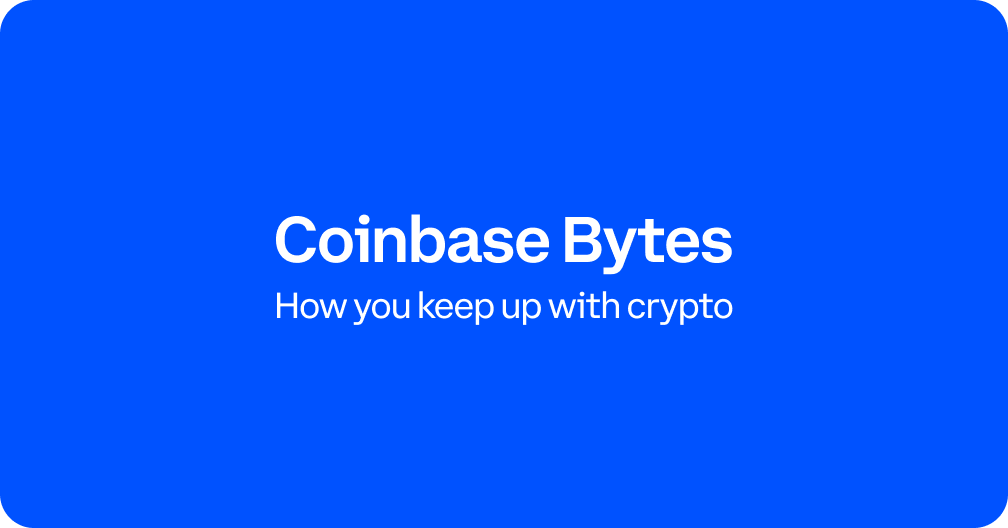Behind Axie Infinity’s $625M hack
There’s never a dull moment on the blockchain. Here’s what you need to know this week:
Crypto hits 2022 highs. Global crypto adoption and Wall Street’s bullish outlook could be contributing forces.
Axie Infinity suffered the largest-ever DeFi hack. The story behind the popular crypto game’s $625 million exploit.
The week in numbers. An Elon Musk-related price jump for Dogecoin, and other key figures to know this week.
SPRING FORWARD
Crypto hits 2022 highs as global adoption and regulatory clarity increases
After a rocky start to the year, Bitcoin, Ethereum, and the broader crypto market have all spent a couple of weeks hovering around 2022 highs. What’s behind this (relatively) sunny spring? A range of factors have likely boosted crypto markets — including increased adoption by both individual traders and Wall Street, a surge in crypto aid to Ukraine, fears around rapid inflation, and more clarity from regulators and elected officials. Let’s dig in.
Several new polls show that a growing cohort of American investors are bullish on crypto. According to a new Quinnipiac University poll, 43% of Americans think crypto “will become a dominant economic force in the long-term,” while an NBC survey finds that one in five have traded or invested in crypto. What are some of the main factors driving crypto adoption? According to an Investopedia survey, one in four millennials is using crypto to fund retirement goals, while a Gemini report finds that roughly 40% of investors view digital assets as a way to hedge against inflation. (U.S. inflation, as you may have noticed, recently notched another 40-year high.)
Wall Street’s biggest names are responding to increased client demand for crypto services. Goldman Sachs (which recently made its first “over-the-counter” BTC trade) reports that 60% of surveyed clients expect to increase their crypto holdings over the next year. In a new shareholder letter, BlackRock CEO Larry Fink writes that the asset-management giant, spurred by client demand, “is studying digital currencies, stablecoins and the underlying technologies.” It’s a global phenomenon too: from Australia to Israel, major international banks have begun providing crypto-trading services.
President Biden issued an executive order around crypto regulation in the U.S. earlier this year — and officials have begun painting a picture of what that framework might look like. A bipartisan group of Senators, led by Wyoming Republican Cynthia Lummis and New York Democrat Kirsten Gillibrand, have started hashing out what Gillibrand describes as a “broad-based regulatory framework for how this industry should potentially be regulated in the future.” And in a recent interview, Treasury Secretary Janet Yellen added another optimistic note: “There have been benefits from crypto, and we recognize that innovation in the payment system can be a healthy thing.”
Globally, many key lawmakers are pursuing regulatory clarity for crypto. In a remarkably crypto-forward display, the United Kingdom revealed a plan to become a “world leader” in the space — with the Treasury even planning to mint its own NFT. Last month, the European Parliament rejected a proposal that would have banned Bitcoin mining, but in a controversial move last week, the body voted to crack down on anonymous crypto transactions, something industry experts — like Coinbase’s Paul Grewal — warn could stifle innovation and violate privacy.
Why it matters… Taken together, these storylines paint a picture of a maturing industry that’s proving its value to investors, regulators, and Wall Street. Meanwhile, the two biggest cryptocurrencies by market cap are celebrating (or preparing to celebrate) major milestones. As of this week, 19 million BTC have been mined out of a maximum supply of 21 million coins — meaning that over 90% of BTC is now in circulation. And as Ethereum prepares for its upcoming “Merge” upgrade, which will move the network from a mining-based blockchain to the rapid and efficient new “proof of stake” blockchain commonly known as ETH2, it’s seen both surging search interest and a solid boost in price.
HACKER NEWS
How Axie Infinity suffered the biggest DeFi hack of all time
Last week, in what’s being called the largest DeFi exploit ever, roughly $625 million was stolen from the Ronin Network, a blockchain “bridge” built by the makers of the popular crypto game Axie Infinity to allow players to move crypto between the game’s Ronin blockchain and the Ethereum network. The incident was the latest in a string of hacks targeting bridges, which are tools that allow users to move crypto from one blockchain to another. The hack sent the prices of both the Ronin blockchain token RON and Axie Infinity’s main token, AXS, tumbling. Let’s take a closer look.
The attack was discovered on March 29, nearly a week after it happened, when a user was unable to withdraw 5,000 ETH from the Ronin Network. Axie developer Sky Mavis investigated and found that 173,600 ETH and 25.5 million USDC had been drained from the Ronin Network on March 23 in two transactions. The hack follows a similar exploit in February, when around $320 million was stolen from the Wormhole bridge.
How was the Ronin hack possible? One key factor was the surprisingly centralized nature of the network, which required approval from just five of nine “validators” to move funds — a vulnerability the hacker took advantage of by acquiring private keys belonging to five validators. Validators are simply computers that help process transactions made on a blockchain. As one of Sky Mavis’ major investors told Bloomberg prior to the hack, “If [bridges] are designed badly or have vulnerabilities, they become a huge risk to the ecosystem.”
In the wake of the hack, RON is down approximately 19% and AXS is down about 10%. In a statement, Sky Mavis COO Aleksander Leonard Larsen said “we are fully committed to reimbursing our players as soon as possible.” The stolen funds included the deposits of players, many of whom live in developing nations such as Brazil, the Philippines and Venezuela, as well as 56,000 ETH from the Axie Infinity treasury.
A major question remains — how will the refund be paid? Unlike the Wormhole hack, in which the funds were almost immediately replenished by the investing firm Jump Crypto, there isn’t a well-heeled investor ready to serve as a backstop for Axie’s lost funds. Fundraising opportunities for Sky Mavis could include selling tokens related to Axie, including AXS and RON, to major players at a discounted price. The company could also sell off some Sky Mavis equity to raise cash, or propose a vote to its community that would allow it to liquidate some of its $1.6 billion community treasury to repay losses.
Why it matters... As the crypto ecosystem continues to evolve, bridges are becoming a major component. And because their code has to be compatible with multiple blockchains, they’re especially tricky to build. Ronin has quickly moved to increase security by replacing the compromised validators and increasing the number of validators required to approve transactions. But what should users do? Do your own research and make sure that the smart contracts you interact with have been audited, for one. And always follow these simple steps for keeping your accounts safe:
NUMBERS TO KNOW
$52 billion
Value of assets backing the USDC stablecoin, much of which will be held by BNY Mellon, the banking giant that USDC operator Circle announced this week as the “primary custodian” of USDC reserves.
$1.4 billion
Amount of Bitcoin purchased by Terra stablecoin (UST) creator Luna Foundation Guard since January. The foundation plans to acquire $10 billion worth of BTC, as part of the reserve collateral that backs UST.
$4.8 million
Value of Snoop Dogg’s SAND token holdings, according to Snoop's new “House I Built” video — which takes place inside the Sandbox metaverse. (SAND is Sandbox’s native token.)
16%
Amount that Dogecoin has gained (as of Tuesday night) since Twitter announced that “Dogefather” Elon Musk would be joining the company’s board. The jump followed Monday’s news that Musk had purchased a 9.2% stake in Twitter.
TUNE IN
The difference between Coinbase and Coinbase Wallet
If you’ve recently searched for Coinbase on the app store, you might have noticed two options: Coinbase and Coinbase Wallet. Why? Well, the short answer is that they’re two different apps — one is for the main Coinbase exchange, where you can buy and sell cryptocurrencies, and the other is for Coinbase’s self-custody wallet, which is sort of like a passport into the wider universe of DeFi and dapps.
In the latest episode of Around the Block, host Justin Mart sits down with Chintan Turakhia, Coinbase Wallet’s director of engineering, to explore the differences between the Coinbase and Coinbase Wallet apps, and how self-custody wallets might represent crypto’s future.
TOKEN TRIVIA
When is Tax Day this year?
A
April 10
B
April 15
C
April 18
D
April 20
Find the answer below.
Trivia Answer
C
April 18










